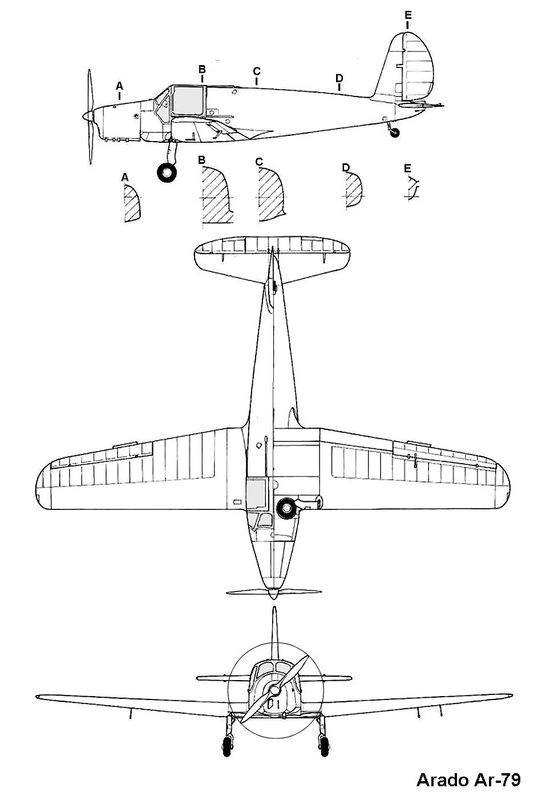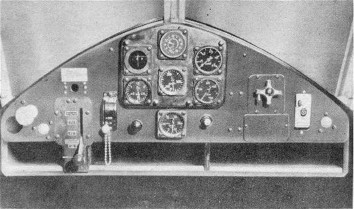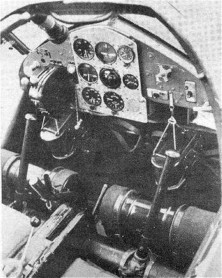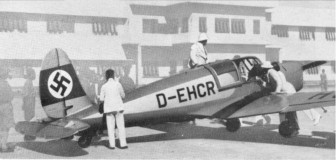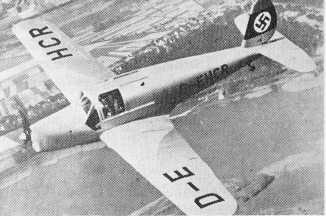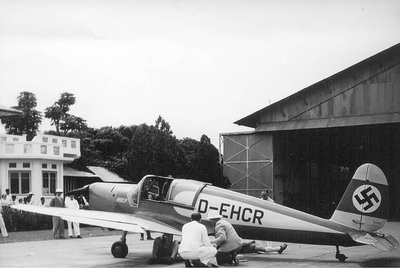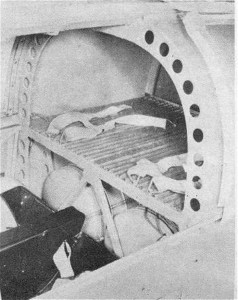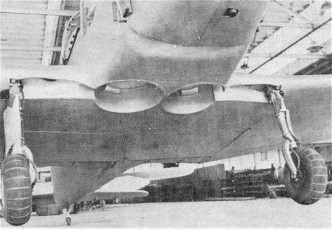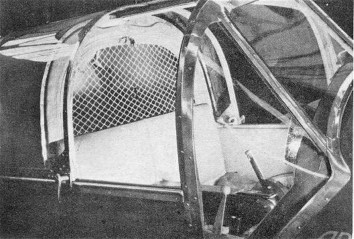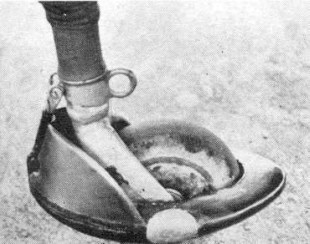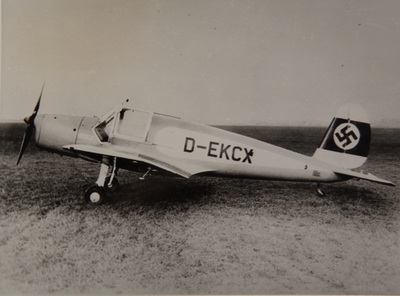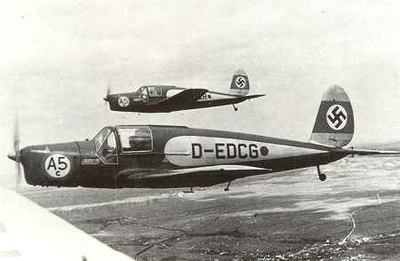Variants
The Arado Ar 79 was a high-performance side-by-side two-seat cabin tourer was designed by Dipl.Ing Walter Blume in 1937, and made its debut in 1938, promptly establishing a number of international class records. The Ar 79 was of mixed construction, the fuselage being a welded steel tube structure and an Elektron monocoque aft, and the single-spar wing being a wooden structure with plywood and fabric skinning. Power was provided by a 105 hp Hirth HM 504A-2 four-cylinder inverted inline engine and all three undercarriage members were retractable.
Ar 79A V1 D-EKCX flown by Herr Lüber set a new 1 000km record in its class with an average speed of 229,04 km/h
Ar 79A V2 D-EHCR flown by Seelbach, established a 2 000-km record with an average speed of 227,029 km/h. A more ambitious flight began on 29 December 1938, piloted by Oblt Pulkowski and Ltn Jennett, was flown non-stop from Benghazi, Libya, to Gaya, India, a distance of 6903 km at an average speed of 160 km/h. For this flight, the aircraft was fitted with a 520 l fuel tank in the fuselage and a 106 1 auxiliary tank beneath the fuselage.
Ar 79 B
Ar 79 D
Ar 79 E
A total of 48 Ar 79s was built in B, D and E versions, the sub-types differing in only minor respects of equipment, etc, production terminating in 1941, and a number being utilised for liaison duties by the Luftwaffe. At least one example - the 47th built - survived WWII and is still flying with the Lufthansa Historical Flight. An Ar 79B-l, this aircraft was registered D-ECUV.


